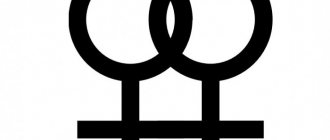Sign Language Interpreter Day was established in January 2003 on the initiative of the Central Board of the All-Russian Society of the Deaf. All-Russian public organization of disabled people “All-Russian Society of the Deaf” (VOG) is the largest and oldest public organization of people with hearing disabilities in Russia, formed back in 1926.
The purpose of Sign Language Interpreter Day is to draw public attention to the problems of the deaf. For comparison, if in Finland there are 300 sign language interpreters for every thousand deaf people, then in Russia there are only three. And over time, the number of sign language interpreters is only becoming smaller. At the same time, the work of a sign language interpreter is socially priceless for the deaf community, because he is needed in court, the police, the tax office, for social protection, at doctor’s appointments, and so on.
Article on the topic Signless telephone. Scientists from Siberia have created an application that converts speech into gestures
Typically, sign language interpreters are children of deaf parents who grew up in a “deaf” environment. You can get an education in this specialty at training centers in St. Petersburg and Moscow.
The language that sign language interpreters “speak” on screen or with their clients is sign language, and several million people around the world communicate in it. In some countries, it has long been officially recognized and is used to adapt news programs and various programs for people with hearing problems.
By the way, on October 24, the State Duma of the Russian Federation adopted in the first reading a bill raising the status of Russian sign language. Thanks to amendments to the laws “On Education” and “On Social Protection of Disabled People in the Russian Federation,” Russian sign language is now defined as the language of communication in the presence of hearing or speech impairments, including in the areas of oral use of the state language of the Russian Federation.
The special significance of this bill is that the official recognition of the status of Russian sign language will make it possible to create the necessary conditions in educational institutions for the hearing impaired to receive education using sign language, to build a system of training and retraining of teachers on the basis of secondary and higher vocational educational institutions, according to the website VOGinfo.ru.
How to communicate with a person in the language of the deaf?
What is sign language
Russian Sign Language (RSL) is an independent language that is used for communication by people with hearing loss.
It consists not only of static figures, but also of a dynamic component. The hands move in a certain way, occupy a certain place in relation to the face. During gestures, it is customary to additionally “pronounce” words with your lips.
In FL, any details are important, including where the gesture is shown (at the forehead and chest, the same movements are interpreted differently), the nature of the movements (rotation of the body and head, facial expressions). We can say that the whole body is involved in the conversation.
When communicating in sign language, every little thing plays a role, so you need to watch your posture and involuntary hand movements. All your actions can be misinterpreted.
Victor Ivanovich Fleury
He was a teacher and worked as a school director in St. Petersburg. He conducted a deep analysis of “deaf-mute speech” and came to the conclusion that sign language, Russian, can be learned by every person with hearing or speech impairment. In addition, he noticed that in certain companies and societies of the deaf, sign language has its own characteristics, differences and subtle patterns inherent specifically to that society. Just as in “our” (verbal speech) there is jargon and specific words, so in the “speech” of the mute this is also present.
He wrote the book "Deaf and Mute". In this work, the teacher collected all the gestures and signs known to him.
There were other people who contributed to Russian education of the deaf: I. A. Sokolyansky, L. V. Shcherba, A. Ya. Udal.
Origin story
It is not known for certain who created sign language; it has existed for many centuries. But only in the 18th century did they begin to systematize it.
During the industrialization of European cities, groups of deaf people who needed training were concentrated in them.
The Italian doctor J. Cardano was the first to volunteer to teach deaf and mute children using gestures. The languages of the deaf and mute with national characteristics were used as a basis. They became the basis for the foundation of gestural interpretation.
In the modern world, sign language is developing, transforming and popularizing. More and more people want to learn sign language to communicate with colleagues, friends or relatives.
There is an international sign language - zestuno, which is used during international events.
Applications
Sign language (dactyl training)
Sign language (dactyl training)
Yato Andorid application for children with large and clear images of gestures. The application contains a large database of words and supports Ukrainian and Russian languages.
.
ASL American Sign Language
ASL American Sign Language
This is another Android application. With it you can learn American Sign Language. The application is based on cards, each of which corresponds to one of the letters of the alphabet.
.
ASL Coach – American Sign Language
ASL Coach - 'American Sign Language'
This is an American Sign Language teaching app designed for iPhone and iPad.
.
How to learn sign language
In this article we will look at teaching Russian Sign Language (RSL). Because this is what they use in Russia, and you will have to deal with it in everyday life.
RSL differs from other sign languages in vocabulary and grammar. At the same time, it differs from the grammar of the Russian spoken language in the complex morphological transformation of words.
The vocabulary of RSL is close to international, because many gestures were taken from German, Austrian and French sign languages.
Introduction to dactylology
You need to start learning sign language by getting acquainted with dactylology. This is a special form of speech in which each letter of the alphabet is indicated by a certain sign made of fingers.
The dactyl alphabet has 33 signs (dactyls), just like the alphabet.
These letter designations are only a small part of sign language. Dactylology is usually used to convey proper names: cities, names, localities and other words that do not have a special gesture.
Basically, deaf and dumb people use gestures to indicate words or entire phrases.
In addition, there is manoral speech - lip reading. Gestures in this case only emphasize certain letters and syllables (hard, soft, voiceless, voiced consonants).
Finger placement technique
In communication in Russian Language, every movement and position of the hands plays a role. So you need to learn sign language slowly, thoroughly working out the technique of placing your fingers.
At the beginning of training, the hand and fingers can quickly get tired. Take breaks. After a few workouts, you will begin to get used to the movements, your arms will adapt, and you will become more resilient.
You can do gymnastics for your hands and fingers to make them bend better.
Fingering speed
Once you have perfected the technique and precision of your finger placement, you can increase your speed. Choose the word you want to learn to pronounce in dactyl. For example, your own name.
Memorize all the signs that need to be shown, stand in front of the mirror and practice. First, just repeat the movements to remember, and then try to show them faster.
Try not to compromise precision of movements for the sake of speed.
Counting and numbers
Once you've honed your knowledge of the alphabet, it's time to move on - time to learn how to show numbers.
To get started, counting from 1 to 10 is enough.
Later, you can expand your knowledge by expanding your knowledge to hundreds.
Dictionaries and manuals
Concise Dictionary of Russian Sign Language
The publication contains a small part of the basic words-gestures, the use of which is possible in everyday life. This basic set of words will help to establish contact between hearing and non-hearing people.
Buy a dictionary.
Dictionary of Russian Sign Language
This dictionary can be used as a teaching aid for learning Russian sign language. Designed for everyone who wants to independently master sign language.
Buy a dictionary.
Educational and methodological manual for students of Russian sign language
The publication presents systematized information about deafness as a sociocultural phenomenon and the associated distinctive features of the culture of deaf people.
- The behavioral norms accepted in the deaf community and the values shared by representatives of this linguistic community are shown.
- The authors also briefly describe some phonological, morphological, lexical and syntactic features of Russian sign language.
Article updated November 2021.
“Greenhouse of Social Technologies” is an educational project whose mission is to make the non-profit sector of Russia strong and independent with the help of information technologies. For civil society, the Greenhouse is a source of interesting content in various complementary formats, educational events, access to networks of volunteer developers, free online tools and software.
How to learn sign language words
Now you can learn the most common words and phrases. It will be difficult to learn the entire language, but gradually you will expand your vocabulary.
In general, learning sign language is not much different from other languages. First of all, remember the most popular words that will be required more often than others.
As a rule, 500-1000 words are enough to understand and communicate with people in a foreign language at a basic level. The principle is the same here. Find a list of words and phrases that are recommended to be studied first, and translate them into sign language.
First, study the words you use most often. Greetings, farewells, apologies, thanks, popular questions. Then independently determine the vector of movement depending on what topics you most often communicate on.
Pronounce all words with your mouth - articulation plays a big role in understanding.
Good afternoon
Stroke the back of your left hand toward you twice. After this, fold the fingers of both hands into the duck’s muzzle, point its “nose” upward, with the back of the fingers facing the interlocutor.
My name is…
Point your index finger at yourself with your right hand. And then stroke the back of your left hand several times in a quick motion.
To indicate a name, use the dactylic alphabet - make up your name from individual characters.
Please
This word means a request for help. A fairly simple and obvious gesture that you don’t even have to remember. Fold your arms together, palms together. Move it a little, as when praying.
Thank you
Sign language is accompanied by articulation, and movements must coincide with the following syllables:
- “spa” – clench your right hand into a fist and touch your forehead with your knuckles.
- “sibo” - the hand touches the chin with its knuckles.
I need help
It’s more difficult here - you need to make three movements:
- Point the index finger of your right hand towards yourself.
- Make a gesture with your little finger, middle finger and index finger, and punch your hand in the air in front of you.
- With open palms, hit each other - their ribs should hit, as if you were showing a cross.
We hope that this phrase will never be useful to you, but if you see such a gesture, come to the aid of someone in need.
What time is it now?
Formally, you have to pronounce the time with your lips.”
Raise your open fingers to your mouth and wiggle them, then tap them on your left wrist, where your watch usually is.
Then raise your right hand in front of you with your fingers open and the tips pointing upward. And move them.
I love you
A simple phrase that will be clear without translation. Point at yourself, at the interlocutor, then kiss your fingertips and touch them to your heart.
Goodbye
Another obvious gesture that you'll learn in a second. Raise your right hand to face level and then wave your hand. But not to the sides, but as if squeezing a rubber ball in it.
In this video you will find all the phrases described above - see how they look and check how correctly you performed the gestures.
Where can you learn sign language?
It will be very difficult to learn RSL from scratch, especially if you have no one to practice with. When learning any language, communication is necessary so that someone notices your mistakes and you can find others. But it’s not always possible to find a partner in person.
There are several options for self-study:
- Videos on YouTube. You can find many channels that post educational materials on this topic. They analyze popular words, lay out interesting dialogues, and do voice-overs for films or songs using gestures. Interesting materials will make language learning more fun by looking at real gestures of actual words and phrases.
- Find a friend to communicate via Skype or other means of video communication.
- The “city of gestures” website is a resource for learning Russian sign language in a playful way. Texts, pictures, video lessons, video dictionaries are used. Competitions, advice, games. There you can find like-minded people for communication and practice. The entire resource is dedicated to the problem of people with hearing loss. It will be useful to familiarize yourself with: jestov.net.
Although nothing compares to regular courses in your city. This way you can hone your skills live, communicate with real people and receive immediate feedback. They will correct your mistakes and help you put your hands in the correct position.
Video
Sign language course
This course consists of 33 lessons and will help you learn this language quickly. Additionally, you can learn psalms in Russian sign language.
Sign language alphabet
The sign language alphabet, prepared by the City of Signs resource, will help you learn all the letters of the Russian alphabet.
ASL lessons
The YouTube page of Bill Vicars, an expert on working with the deaf and hard of hearing, contains many different lessons on learning American Sign Language.
Interesting Facts
Not even facts, just a few things you need to know. Or interesting to know if you want to familiarize yourself with sign language.
- Sign language varies from country to country. There is an international sign language, but it is little used.
- Deaf people read lips, so it is important for them to see your lips as they pronounce words. Don't be closed off and speak clearly so that they can understand you.
- Sign language uses different grammar and word order. For example, question words are placed at the end of sentences.
- SL has its own linguistic features, structure and grammar. It cannot be said that this is simply a copy of ordinary language transferred to gestures.
- In New Zealand, sign language is the third official language.
Films, TV series, songs and performances are adapted for people with hearing problems. All these materials can be found on the Internet, in particular on YouTube.
Learning sign language is not only useful, but also interesting. You can discover a lot of new things, look at the world a little differently, and help a stranger in a difficult situation.
Vkontakte community
Group for those who want to learn the language of the deaf
This is a community of people who want to learn the language of the deaf. In it you can discuss a topic that concerns you related to language learning and other aspects of the lives of hearing-impaired and deaf people.
Visit the site.











